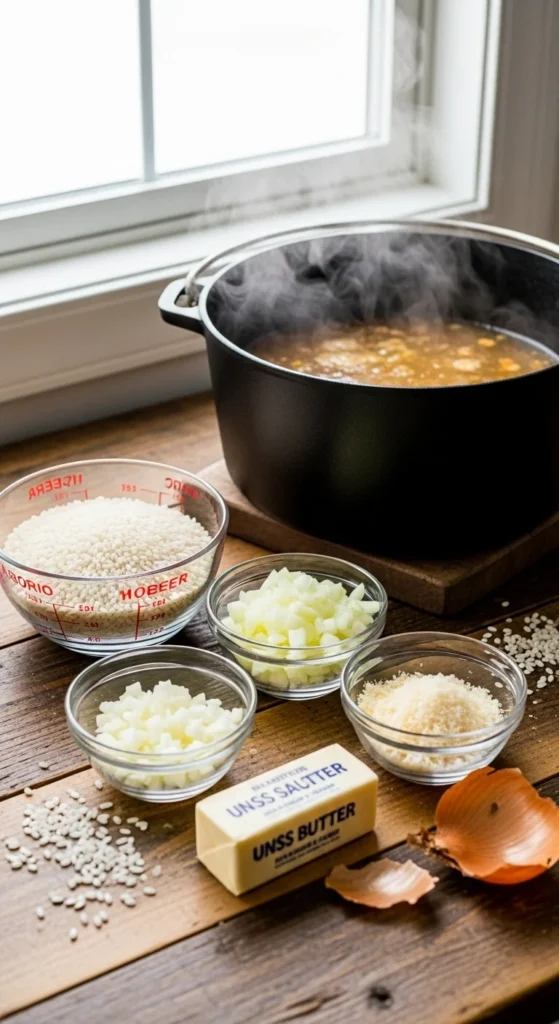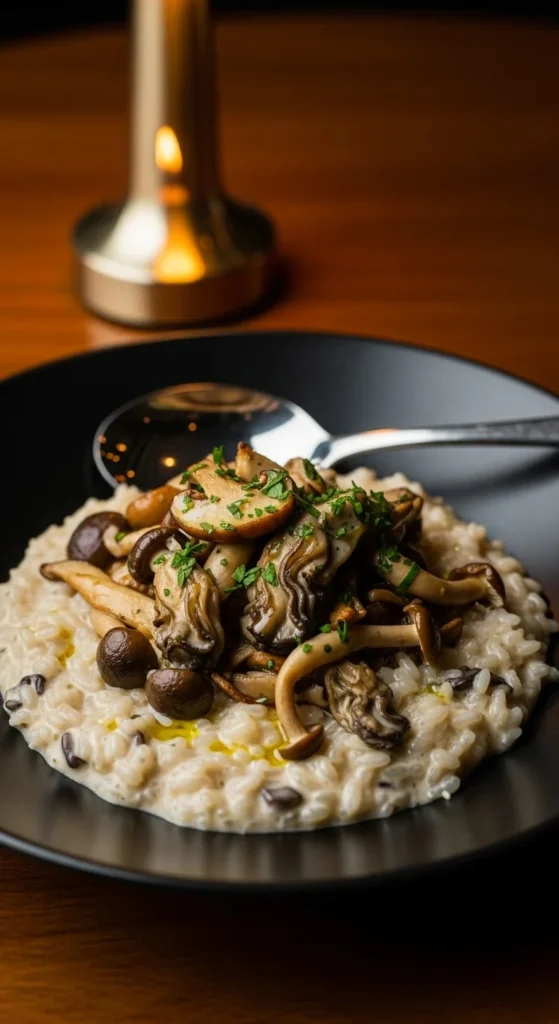If you’ve ever sat in a cozy Italian restaurant, spooning into a bowl of creamy risotto and wondering how they get it that velvety, you’re not alone. The secret isn’t a mystery — it’s in the technique. With a little patience (and plenty of stirring), you can make risotto at home that’s just as luxurious as the restaurant version.

What Makes Risotto So Special
Risotto isn’t just rice — it’s an experience. This Italian classic transforms simple ingredients into something rich, comforting, and elegant. The magic lies in using the right type of rice and slowly coaxing out its natural starches for that signature creamy texture.
The key ingredient:
- Arborio, Carnaroli, or Vialone Nano rice — these short-grain varieties have high starch content and firm centers that hold up during slow cooking.
With the right rice, good broth, and a little love, you’ll have a dish that feels fancy but is easy enough for a weeknight dinner.
Step 1: Gather Your Ingredients
Before you start, get everything ready — risotto is all about timing and attention.
You’ll need:
- 1 ½ cups Arborio rice
- 4–5 cups warm chicken or vegetable broth
- 2 tablespoons butter
- 2 tablespoons olive oil
- 1 small onion, finely chopped
- 2 cloves garlic, minced
- ½ cup dry white wine (optional but adds flavor)
- ½ cup grated Parmesan cheese
- Salt and black pepper to taste
- Optional garnish: fresh parsley, lemon zest, or sautéed mushrooms

Step 2: Warm Your Broth
This step might seem small, but it’s essential. Keeping your broth warm ensures even cooking and prevents shocking the rice each time you add liquid.
- Heat the broth in a separate saucepan over low heat.
- Keep it gently simmering throughout the cooking process.
If the broth cools down, it can halt the rice’s creamy transformation — and we can’t have that!
Step 3: Sauté the Base
In a large pan or wide skillet, heat the olive oil and 1 tablespoon butter over medium heat. Add the chopped onion and cook until translucent (about 3–4 minutes). Then, add the garlic and stir for another 30 seconds until fragrant.
This step builds the flavorful base that carries the whole dish.

Step 4: Toast the Rice
Add the Arborio rice directly into the pan with the onions and stir well. Let it toast for 1–2 minutes until the edges look slightly translucent.
This helps lock in the texture of the grains and prevents them from turning mushy later. You’re coating each grain in fat and flavor — setting the stage for creaminess.
If you’re using wine, now’s the time: pour in the white wine and stir until it’s mostly absorbed.
Step 5: Add Broth Slowly — and Stir!
Here’s where the magic happens. Instead of dumping in all the liquid, add it one ladle at a time.
- Add a ladleful of warm broth.
- Stir gently and consistently until most of the liquid is absorbed.
- Repeat, one ladle at a time, until the rice is tender and creamy — about 18–22 minutes total.
The slow addition of liquid releases the rice’s starch, creating that silky, restaurant-style texture.
Pro tip: Don’t rush it! Stirring constantly may sound tedious, but it’s what gives risotto its signature creaminess.

Step 6: Finish with Butter and Cheese
When the rice is al dente (tender with a slight bite) and perfectly creamy, remove it from heat. Stir in the remaining tablespoon of butter and grated Parmesan cheese.
This final step, known in Italian as mantecatura, adds a luxurious finish. Adjust salt and pepper to taste.
The result? A glossy, rich risotto that flows slightly on the plate — never sticky, never dry.
Step 7: Serve Like a Pro
Spoon the risotto onto warm plates or shallow bowls. Garnish with:
- A sprinkle of extra Parmesan
- A touch of chopped parsley or basil
- Freshly cracked pepper or lemon zest for brightness
If you want to take it up a notch, top it with sautéed mushrooms, roasted shrimp, or a drizzle of truffle oil.

Common Mistakes to Avoid
Even simple dishes have pitfalls — here’s how to avoid them:
- Too much liquid: Add broth gradually; stop when the texture is creamy, not soupy.
- Skipping the rest: Let risotto sit for 2 minutes before serving — it thickens slightly.
- Overcooking: Test the rice; it should be soft but not mushy.
Final Thoughts
Risotto is proof that simple ingredients can make something extraordinary — as long as you give them care and patience. Each spoonful should feel like comfort food dressed up for date night.




Leave a Reply